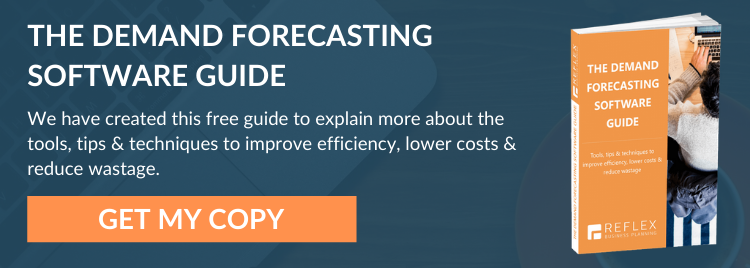The shift in consumer habits away from traditional ‘bricks and mortar’ shops towards online retail presents ecommerce businesses with an opportunity for growth and increased profitability. However, while operating online frees businesses from the expensive necessity to maintain and staff a physical retail space, they remain subject to the basic principles of supply and demand affecting all retail businesses.

This is where Demand Forecasting and Cash Flow Planning come into play.
What Is Ecommerce Demand Forecasting?
Demand forecasting analyses key market information including past online sales, market trends, and sales cycles to accurately predict which products are likely to be in demand going forward, when demand will be at its highest, and to what extent.
By combining each of these elements, and expanding demand forecasting principles across an entire product range or asset base, online retail businesses are able to develop a detailed picture of which and how many products to keep in stock in order to fully capitalise on consumer demand while ensuring the best possible use of resources including capital, manufacturing capacity, and marketing expenditure.
For small and mid-sized businesses in particular, demand forecasting is intricately linked in with cash flow planning.
Cash Flow Planning
Once a clear idea of consumer demand for products has been established across a workable timeframe using demand forecasting strategies, Ecommerce businesses can formulate an effective financial resource management strategy based on predicted sales revenues.
For example, if demand forecasting indicates that sales are liable to be low during a particular month of the year, businesses can earmark this moment for a substantial marketing push, or reinvest in promoting products with a greater chance of a sales lift.
Conversely, periods of high demand will necessitate a channelling of resources towards manufacturing during proceeding months in order to fully meet the increase in demand. Using these techniques, Ecommerce businesses can include future revenue in their spending and investment plans, rather than budgeting purely on the basis of existing capital. This process forms the basis of cash flow planning.
Optimising Your Demand Forecasting and Cash Flow Planning Processes
Data collected in the course of demand forecasting and cash flow planning can be continually reanalysed and assessed in response to changing market conditions. This enables businesses to respond proactively, and ultimately become more successful.
As demand forecasting involves a wide range of variables and is often subject to realignments as events shape market change, ecommerce businesses benefit from specialist planning software, such as Reflex Planning, to make informed marketing decisions.
Find Out More
To find out more about the benefits of Reflex Planning for ecommerce retails, please get in touch with one of our service team today.

Image Source: Unsplash
